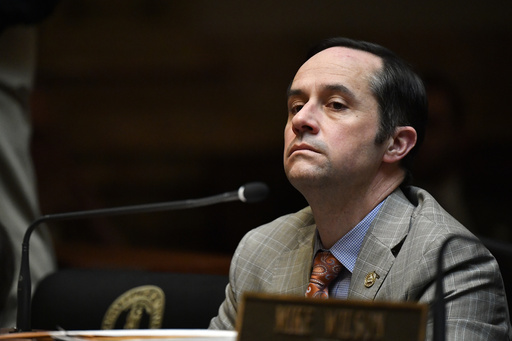
FRANKFORT, Ky. — On Tuesday, Kentucky’s legislature finalized a significant reduction in the state’s individual income tax rate, fulfilling a key Republican goal just five days into the new session.
The Senate voted overwhelmingly, 34-3, to approve a decrease from 4% to 3.5%, set to take effect at the beginning of 2026. The bill will be presented to Democratic Governor Andy Beshear, who has expressed his support for the tax reduction. This move continues the trend of lowering personal income taxes since the Republicans assumed complete control of the legislature in 2017.
Republican Senator Chris McDaniel emphasized, “It’s been often said that there are only two certainties in life — death and taxes. Today, we can add a third: the General Assembly will relentlessly pursue tax reductions.” This sentiment reflects the philosophy behind House Bill 1, which aims to diminish the tax burden on citizens.
Proponents believe that the tax cut will foster economic growth and population increases in Kentucky, allowing residents to retain more of their earnings. The timing of Kentucky’s push for reduced taxes coincides with broader proposals at the federal level and initiatives from governors in various states advocating for tax decreases, despite many states already having implemented tax cuts in recent years. This movement persists even as growth in state revenues appears to be plateauing.
Contrarily, Democratic Senator Cassie Chambers Armstrong, among the few who opposed the bill, argued that the benefits of the tax cut would favor affluent Kentuckians disproportionately. She voiced her commitment to providing relief for struggling families, advocating for a refundable child tax credit for those with low incomes and a sales tax exemption for essential items like diapers.
Her perspective was challenged by Republican Senator Michael Nemes, who defended the income tax cut, asserting that it rightfully belongs to the taxpayers. “They earned it,” he declared. “It’s their money, not ours.” Supporters of the income tax reduction have projected that it will save taxpayers approximately $718 million each year.
Jason Petrie, chairman of the House budget committee, mentioned last month that the state would maintain a balanced budget even after implementing the lower tax rate in 2026. The bill found unanimous backing from Senate Republicans, though among Democrats, opinions were mixed.
Senator David Yates, a Democrat who endorsed the bill, indicated that lowering the tax appears prudent given the current economic conditions. However, he warned that if the personal income tax continues to drop and ultimately disappears, it could lead to increases in other forms of taxation. He explained, “Taxes are necessary to support government operations.”
The reduction of the personal income tax has been a recurring agenda for Republican legislators, and since the enactment of a tax overhaul in 2022, there has been a gradual decrease in the income tax rate, conditioned on meeting specific revenue benchmarks. This tax overhaul also saw an expansion of the state sales tax to more services, which critics argue has adversely impacted lower-income families.
The House passed this latest tax cut decisively on the third day of the session in early January. Following a customary break, lawmakers reconvened on Tuesday, where the Senate considered the bill on its first day back. Republican supermajorities control both chambers of the legislature.
With the passage of this new income tax reduction, attention will now shift to future cuts and their timing. Some Senate Republicans indicated that they hope this latest adjustment will pave the way toward the larger goal of entirely eliminating the individual income tax.
Senator Gex Williams suggested that deeper incremental cuts might be feasible in the coming years, possibly as much as three-quarters of a percentage point or even a full 1%. He expressed optimism for achieving this during the upcoming 60-day legislative session in 2026, where lawmakers will work on the state’s two-year budget. “I look forward to the next session, aiming for a cut greater than one-half percent,” Williams stated.

